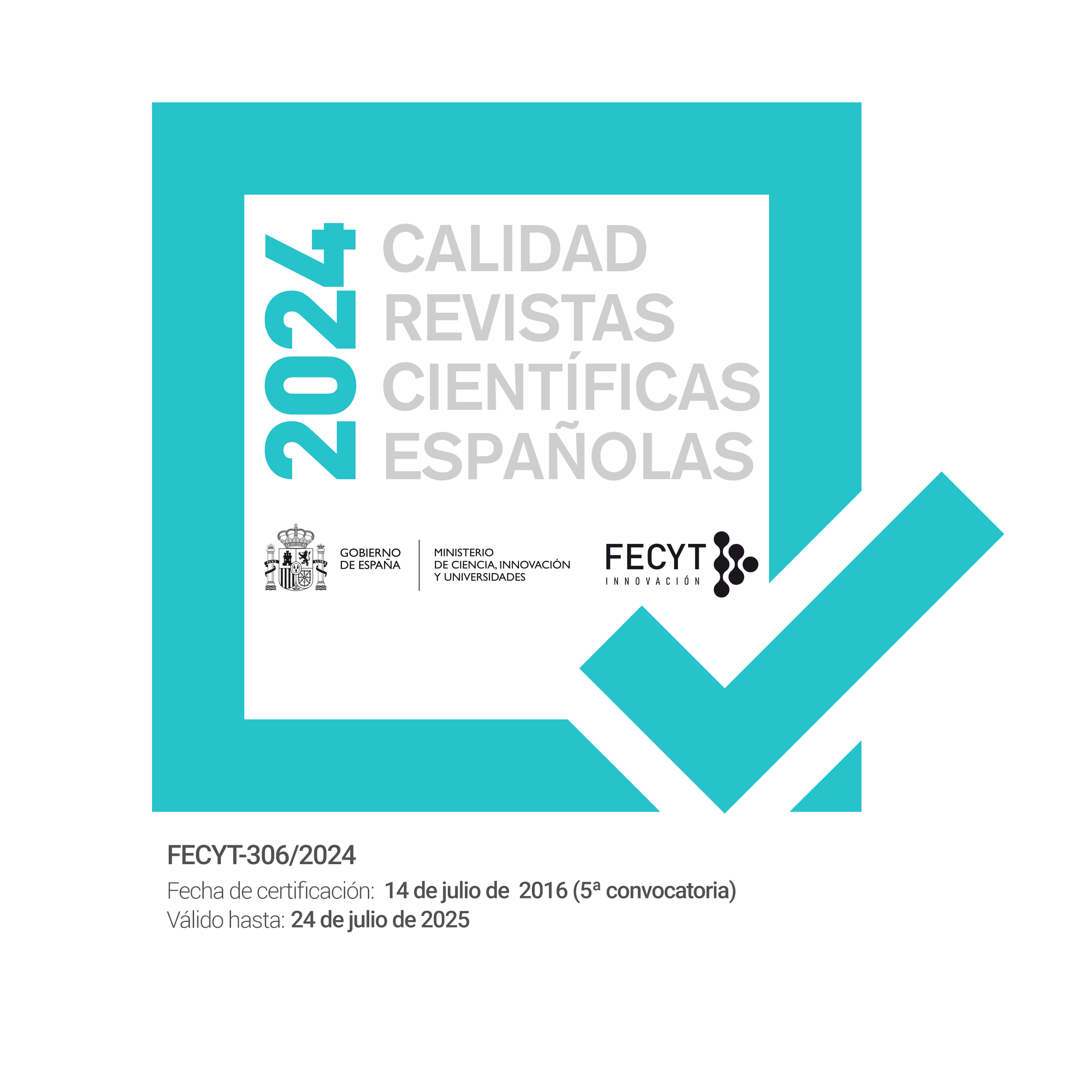Perception of the pandemic situation by the Spanish population
DOI:
https://doi.org/10.22325/fes/res.2023.161Keywords:
Sociology of attitudes, pandemic, COVID-19, Denials, Sociology of health, Attitudinal groupsAbstract
The objectives that guide this text are four: 1) Reconstruct the theoretical framework of the sociology of attitudes; 2) Identify the relevant attitudes that Spanish citizens held in the face of the pandemic; 3) Measure the weight or percentage of the population in each of them and, finally, 4) Characterize the sociological profile of each attitudinal type. To these, we add a complementary reflection or objective, referring to the validity and usefulness of these categories, beyond the context of the covid-19 pandemic among the Spanish population.
References
Abdelhafiz, A. S., Mohammed, Z., Ibrahim, M. E., Ziady, H. H., Alorabi, M., Ayyad, M., & Sultan, E.A. (2020). Knowledge, perceptions, and attitude of Egyptians towards the novel coronavirus disease (COVID-19). Journal of Community Health, 45(5), 881-890.
Allport, G. W. (1935). Attitudes. En C. Murchison (Ed.), Handbook of Social Psychology. Worcester, MA: Clark University Press.
Amat, F., Arenas, A., Falcó-Gimeno, A., Muñoz, J. (2020). Pandemics meet democracy. Experimental evidence from the Covid-19 crisis in Spain. SocArXiv. https://doi.org/10.31235/osf.io/dkusw
Beck, U. (1986). La sociedad del riesgo. Hacia una nueva modernidad. Barcelona: Paidós.
Berger, P. L., & Luckmann, T. (1966). The social construction of reality: A treatise in the sociology of knowledge. Anchor.
Bourdieu, P., & Wacquant, L. (1992). Réponses, Paris. Le Seuil, 114.
Caínzos, M., y Voces C. (2021). La pandemia y las actitudes hacia el estado de bienestar. En O. Salido, y M. Massó (Eds.), Sociología en tiempos de pandemia (pp. 267-278). Madrid: FES.
Carel, H. H. (2013). Illness, phenomenology, and philosophical method. Theoretical medicine and bioethics, 34(4), 345-357. https://doi.org/10.1007/s11017-013-9265-1
Carreón-Guillén, J., Bustos-Aguayo, J. M., Bermúdez-Ruíz, G., Espinoza-Morales, F., y García-Lirios, C. (2020). Actitudes hacia la pandemia ocasionada por el coronavirus SARS-COV-2 y la COVID-19. INVURNUS, 15(2), 12-16.
Cicres Bosch, J., y Masgrau Juanola, M. (2021). La esloganización del discurso fronterizo: los eslóganes políticos en torno a la pandemia de la Covid-19= Sloganization of border discourse: political slogans on the Covid-19 pandemic. Cultura, lenguaje y representación, 26, 189-207.
De La Vega, R., Ruíz-Barquín, R., Boros, S., & Szabo, A. (2020). Could attitudes toward COVID-19 in Spain render men more vulnerable than women?. Global public health, 15(9), 1278-1291.
Eagly, A. H., & Chaiken, S. (1998). Attitude structure and function. En D. T. Gilbert, S. T. Fiske, & G. Lindzey (Eds.), The Handbook of Social Psychology (4th ed., Vol. 1, pp. 269-322). New York: McGraw-Hill.
Farr, R. (1994). Attitudes, social representations and social attitudes (discussion of C Fraser). Papers on Social Representations, 3, 33-36.
Foucault, M. (2008). Vigilar y castigar. Nacimiento de la prisión. Buenos Aires: Siglo XXI
Fraser, C. (1994). Attitudes, social representations and widespread beliefs. Papers on Social Representantions, 3, 13-25.
Giddens, A. (1994). Vivir en una sociedad postradicional. En U. Beck, A. Giddens, y S. Lash (Eds.), Modernización reflexiva. Política, tradición y estética en el orden social moderno (pp. 75-136). Madrid: Alianza Editorial.
Goldman, R. D., Yan, T. D., Seiler, M., Parra Cotanda, C., Brown, J. C., Klein, E. J., Hoeffe, J., Gelernter, R., Hall, J. E., Davis, A. L., Griffiths, M. A., Mater, A., Manzano, S., Gualco, G., Shimizu, N., Hurt, T. L., Ahmed, S., Hansen, M., Sheridan, D., Ali, S., Thompson, G. C., Gaucher, N., Staubli, G., & International COVID-19 Parental Attitude Study (COVIPAS) Group (2020). Caregiver willingness to vaccinate their children against COVID-19: Cross sectional survey. Vaccine, 38(48), 7668-7673. https://doi.org/10.1016/j.vaccine.2020.09.084
Goldthorpe, J. H., Llewellyn, C., & Payne, C. (1980). Social mobility and class structure in modern Britain. Oxford: Clarendon Press.
Gómez Castro, L. (2017). La comunicación de riesgo en salud: aspectos teóricos y metodológicos para el control de emergencias públicas sanitarias. MediSan, 21(12), 3386-3399.
Habermas, J. (1987). Teoría de la acción comunicativa. Tomo I: Racionalidad de la acción y racionalización social. Madrid: Taurus.
Hofmann, B. (2015). Suffering: Harm to Bodies, Minds, and Persons. In S. Edwards, & T. Schramme (Eds.), Handbook of concepts in the philosophy of medicine. Berlin: Springer
Huapaya, J. A., Maquera-Afaray, J., García, P. J., Cárcamo, C., & Cieza, J. A. (2015). Conocimientos, prácticas y actitudes hacia el voluntariado ante una influenza pandémica: estudio transversal con estudiantes de medicina en Perú. Medwave, 15(04).
Hydén, L.C. (1997). Illness and narrative. Sociology of health & illness, 19(1), 48-69.
Juanillo, N. K. (2001). The risks and benefits of agricultural biotechnology: Can scientific and public talk meet?. American Behavioral Scientist, 44(8), 1246-1266.
Leung, S.O. (2011). A comparison of Psychometric Properties and normality in 4-, 5-, 6-, and 11-point Likert scales. Journal of Social Service Research, 37(4), 412-421.
Li, J., Nguyen, T., & Coca-Stefaniak, J. A. (2020). Coronavirus impacts on post-pandemic planned travel behaviours. Annals of tourism research, 102964. Advance online publication. https://doi.org/10.1016/j.annals.2020.102964
Lovón Cueva, M. A., Montenegro-García, M. I., y Chegne Cortez, A. D. (2021). La COVID-19 y la metáfora bélica: un análisis cognitivo en los diarios digitales y las redes sociales. Boletín de la Academia Peruana de la Lengua, 70, 155-196.
Luhmann, N. (2000). La realidad de los medios de masas. Barcelona: Anthropos.
Matas Terrón, A. M., Hurtado, J. C. T., Martín, J. J. J., Azuaga, F. M. B., y Almeda, L. (2004). Diagnóstico de las actitudes hacia el medio ambiente en alumnos de secundaria: una aplicación de la TRI. Revista de Investigación Educativa, 22(1), 233-244.
Moscovici, S. (1961). La Psychanalyse, son image et son public. Paris: Presses Universitaires de France.
Orellana C., y Orellana L. (2020). Predictores de síntomas emocionales durante el cierre residencial debido a la pandemia de COVID-19 en El Salvador. Actualidades en Psicología, 34(128). https://revistas.ucr.ac.cr/index.php/actualidades/article/view/41431
Pérez Cárdenas, C. (2020). Actitudes frecuentes en una población de Alamar ante la COVID 19 en tiempo real. Revista Habanera de Ciencias Médicas, 19(5).
Puspitasari, I. M., Yusuf, L., Sinuraya, R. K., Abdulah, R., & Koyama, H. (2020). Knowledge, attitude, and practice during the COVID-19 pandemic: a review. Journal of Multidisciplinary Healthcare, 13, 727-733.
Raude, J., Lecrique, J. M., Lasbeur, L., Leon, C., Guignard, R., Roscoät, E. D., & Arwidson, P. (2020). Determinants of preventive behaviors in response to the COVID-19 pandemic in France: comparing the sociocultural, psychosocial and social cognitive explanations. Frontiers in Psychology, 11, 3345.
Reguero Sanz, I., Jiménez, V. M., Berdón Prieto, P., & Herrero Izquierdo, J. (2021). El discurso sobre la COVID-19: un estudio en la prensa de Italia, España y Alemania. Revista de Comunicación, 20(1), 239-267.
Ruiz Mamani, P. G., Morales-García, W. C., White, M., & Marquez-Ruiz, M. S. (2020). Properties of a scale of concern for COVID-19: Exploratory analysis in a Peruvian sample. Propiedades de una escala de preocupación por la COVID-19: análisis exploratorio en una muestra peruana. Medicina clínica, 155(12), 535-537. https://doi.org/10.1016/j.medcli.2020.06.022
Sallam, M. (2021). COVID-19 vaccine hesitancy worldwide: a concise systematic review of vaccine acceptance rates. Vaccines, 9(2), 160.
Sandman, P. M. (1987). Risk communication: facing public outrage. EPA Journal, 13, 21-22
Santana-López, B. N., Santana-Padilla, Y. G., Martín-Santana, J. D., Santana-Cabrera, L., & Rodríguez, C. E. (2019). Creencias y actitudes de trabajadores sanitarios y estudiantes de enfermería de una región de España ante una pandemia de gripe. Revista Peruana de Medicina Experimental y Salud Pública, 36, 481-486.
Seale, H., Kaur, R., Wang, Q., Yang, P., Zhang, Y., Wang, X., Li, X., Zhang, H., Zhang, Z., & MacIntyre, C. R. (2011). Acceptance of a vaccine against pandemic influenza A (H1N1) virus amongst healthcare workers in Beijing, China. Vaccine, 29(8).
Sontag, S. (1989). Illness as Metaphor and AIDS and Its Metaphors. New York: Doubleday
Sorokowski, P., Groyecka, A., Kowal, M., Sorokowska, A., Białek, M., Lebuda, I., Dobrowolska, M., Zdybek, P., & Karwowski, M. (2020). Can information about pandemics increase negative attitudes toward foreign groups? A case of COVID-19 outbreak. Sustainability, 12(12), 4912.
Thomas, W. I. & Znaniecki, F. (1918). The Polish peasant in Europe and America. Boston: Badger.
Toombs, S. K. (1990). The temporality of illness: Four levels of experience. Theoretical medicine, 11(3), 227-241. https://doi.org/10.1007/BF00489832
Torregrosa, J. R. (1968). El estudio de las actitudes: perspectivas psicológicas y sociológicas. REOP, 11, 155-165.
Williams, S. N., Armitage, C. J., Tampe, T., & Dienes, K. (2021). Public attitudes towards COVID‐19 contact tracing apps: A UK‐based focus group study. Health Expectations, 24(2), 377-385.
Published
How to Cite
Issue
Section
License
Copyright (c) 2023 Manuel Docampo García

This work is licensed under a Creative Commons Attribution-NonCommercial 4.0 International License.
• The transfer of the copyright of the article to Revista Española de Sociología.
• The assignment to the Revista Española de Sociología of the rights of commercial exploitation of the article to third parties both in the offset and digital formats, as well as to the search engines and platforms that may serve as intermediaries for the sale or knowledge of the article.




